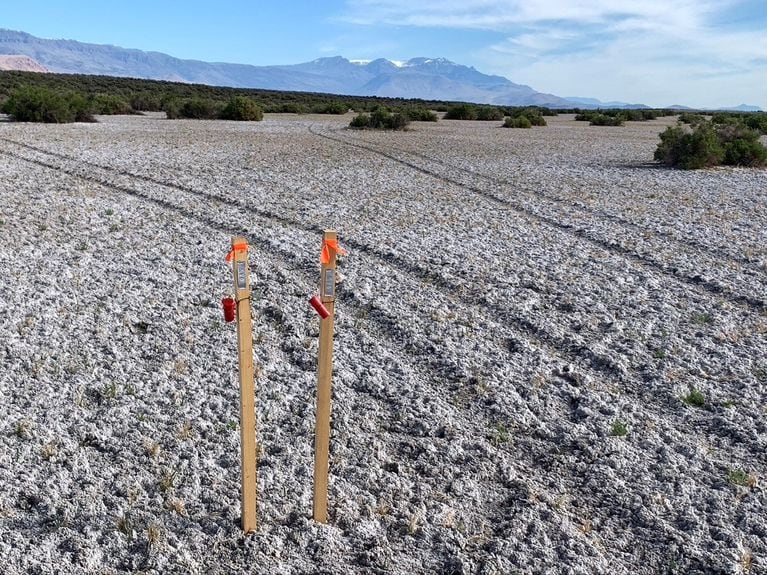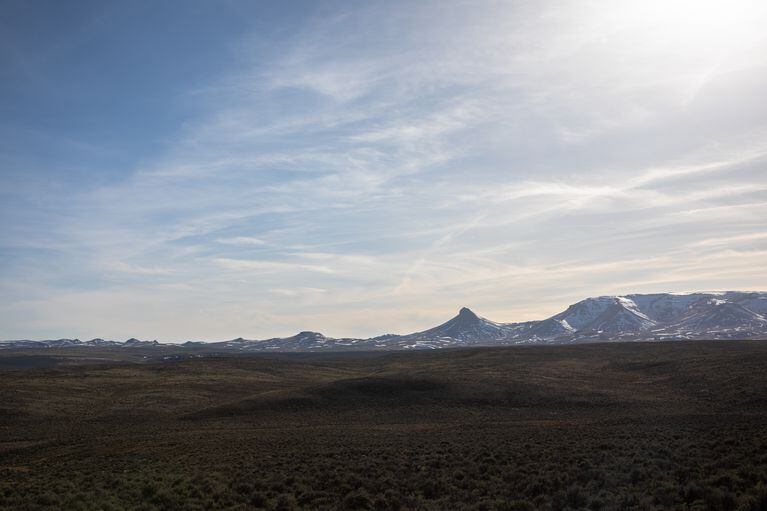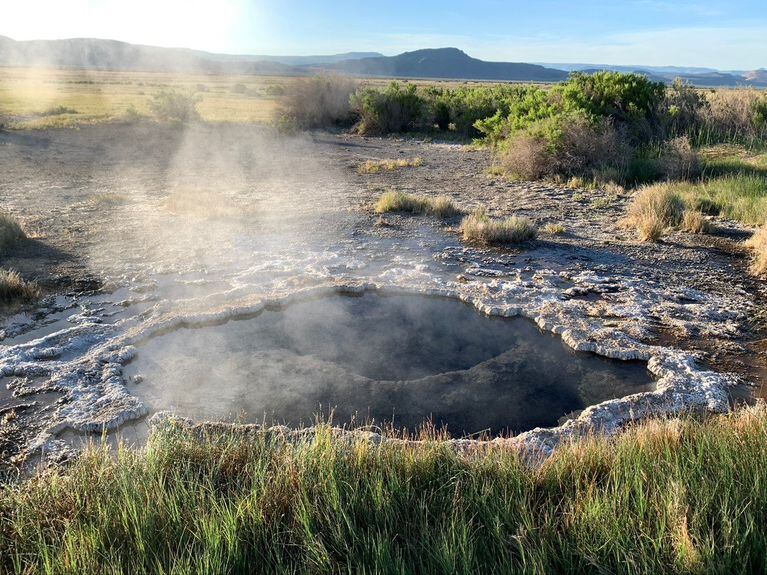We pray they do the right thing and actually remove all their litter. The BLM has been known as a toothless badger. Now the Monument system has rules, no equipment within 10 miles of the center etc etc. that drove Desert Dog Mining, digging world class red colored opal agate thunder eggs from the face of the Steens fault block, out of business.

The Reedy Lagoon Corporation, a mineral explorer based outside Melbourne, announced Friday that it would stop work on its project near the town of Fields, Oregon, after finding out the land was off limits to new mining.
It’s the second lithium project to flop in Harney County this summer as companies look to cash in on the [Worlds'] hunger for the mineral known as “white gold.” Lithium is the main ingredient in batteries for electric vehicles, consumer electronics and energy storage. Reedy Lagoon quietly staked claims this summer on nearly 9,000 acres surrounding Borax Lake and on the southern portion of the Alvord Playa, a dried-up alkali lakebed, and made its initial pitch to investors. ( 9,000 acres equals 450 lode claims at around 300 each before any labor or 2,250 stakes)
Harney County has more than 20 active mines, according to data from the state Department of Geology and Mineral Industries, most of them small basalt and cinder mines. Lithium mining would likely be a much bigger undertaking. Local landowners took quick note of the wooden stakes dotting the iconic desert landscape and notified the Bureau of Land Management field office in Burns. ( They all presented a clear and present danger to other playa users of motorized recreational vehicles and are officially illegal litter by state law)
“Lithium is such a buzzword in Oregon … that people are extra vigilant to it,” said Katie Rhode, a geologist with the Burns BLM.
Safeguarding the Alvord Desert from new mining has been a priority for decades. Congress passed a law in 2000 protecting hundreds of thousands of acres in the Steens Mountain area, including the Alvord (and decalaring many claims invalid). The desert and lakebed playa are increasingly popular with recreationists seeking solitude in an otherworldly Oregon landscape (or a land speed record or UN festival).
The law included what’s known as a mineral withdrawal, which prohibits new mineral and geothermal development in the area. (OR ANY USE OF EQUIPMENT WITHIN 10 miles)
After Rhode confirmed Reedy Lagoon’s stakes were subject to that withdrawal, the BLM informed the company its claims would be invalidated and the stakes should be removed. (NOT THEY HAD TO) Reedy Lagoon managing director Geof Fethers said in a press release that the company was scrapping the project on the BLM’s advice.
Federal laws governing mining and prospecting in the U.S. encourage people and companies to look for mineral resources on public lands and don’t always require them to notify land managers. Rhode said the BLM isn’t aware when stakes go in the ground. (They are notified BEFORE any operations can start) “In this case, I really feel like it helps that there were extra eyes on the ground that would help us see the work that’s happening on this really large landscape,” she said. Reedy Lagoon had 90 days from the time its claims were staked to alert land managers but would have run into the Steens mineral withdrawal regardless.
The prohibition on new mining also nixed Canadian company ACME Lithium’s project near Whitehorse Ranch earlier this year. (about 30 miles east in the same all encompassing withdrawal) Both ACME Lithium and Reedy Lagoon touted the projects’ proximity to the more well-developed projects to the southeast in statements to investors. (Different state, different rules)

Disaster Peak punctuates the northwest rim of the McDermitt Caldera on the Oregon-Nevada border in this March 2022 file photo. The caldera has some of the highest concentrations of lithium in the U.S., but mineral companies have also eyed smaller calderas nearby.
Disaster Peak punctuates the northwest rim of the McDermitt Caldera on the Oregon-Nevada border in this March 2022 file photo. The caldera has some of the highest concentrations of lithium in the U.S., but mineral companies have also eyed smaller calderas nearby. (Historically the largest mercury mine during WW2 has gold and still provides great petrified woods and agates, Gary Green is from around there etc.)
The McDermitt Caldera, a 16 million-year-old supervolcano straddling the Oregon-Nevada border, has some of the highest concentrations of lithium in the United States. (See Opalite Mining District or Cordero Mine)
On the Nevada side of the caldera, Canadian company Lithium Americas has all the required permits to begin construction on a large, open-pit lithium mine at Thacker Pass that has faced staunch opposition from environmental groups, several Native American tribes and some local ranchers. The federal decision to approve the mine is under appeal. (note Denio is below the Steens and Alvord Desert in Nevada. The McDermit deposits are 50 miles away on the other side of a mountain range in the Caldera hole; 30x70 miles.)
Meanwhile, Australian company Jindalee Resources has continued its lithium exploration on the Oregon side of the caldera, despite similar opposition. The company is several years away from proposing a mine if it ever does. (Never will. The biggest new Nickle Platinum deposit is in Eastern Oregon but regulations mean it will never be opened either.)
The (decades old) ban on new mining in the Steens Mountain region stopped Reedy Lagoon and ACME Lithium in their tracks, but the nascent projects may not have made it very far anyway. Oregon is not Nevada. Few companies have pursued lithium in Oregon compared to its southern neighbor Nevada. The Silver State has the country’s only operative lithium mine, and dozens of companies have staked claims and started exploring for the mineral there in a Wild West fashion. Only Jindalee is actively exploring for lithium in Oregon. That’s partly because the ingredients for large — and economically viable — lithium deposits are less common in the Beaver State. (BUT the political atmosphere is very anti mining and super regulatory with drawn out approval timelines nobody could afford.)
According to the Minerals Education Coalition, lithium deposits form in pegmatites, a type of rock, and in lake brines or playas such as the Alvord Desert. Steam rises from Borax Hot Springs in the Alvord Desert near Fields, Ore. Reedy Lagoon Corporation staked mining claims to target lithium brines associated with the geothermal hot springs.

Steam rises from Borax Hot Springs in the Alvord Desert near Fields, Ore. Reedy Lagoon Corporation staked mining claims to target lithium brines associated with the geothermal hot springs. Courtesy of Katie Fite / Wildlands Defense
Most of the lakebed and brine deposits in the United States occur in what’s known as the Basin and Range Province, a large geographic region that covers most of the inland West and portions of Mexico. It’s characterized by rugged mountain ranges and enclosed lakes or basins with no or few outlets to the ocean. (Massive mineral withdrawals were made to reserve all and any resources to the Federal Government decades ago; just like all the low sulfur coal locked up in the Escalante Wilderness for later.)
“The Basin and Range province only occurs in the southeasternmost portion of Oregon, whereas it covers nearly the whole state of Nevada,” said Thomas Benson, a volcanologist who now works as the vice president of global exploration for Lithium Americas, in an email. Benson’s doctoral research focused on calderas in Oregon and Nevada created by the Yellowstone hotspot, a stationary plume of hot mantle that’s created volcanoes from McDermitt to Yellowstone National Park. (as the North American plate moved across it tracking the effects from off california in the past to now under Mntana after blowing series of caldera across Idaho.)
Benson said the McDermitt Caldera is a unique geologic feature in which all the ingredients for large lithium deposits are combined. After the initial eruption at McDermitt more than 16 million years ago, Benson said, additional magmatic episodes left different concentrations of lithium in the lakebed clays on either side of the state line.“The southern portion of the caldera on the Nevada side at Thacker Pass … is significantly higher in grade than the sediments on the Oregon side of the border,” he said.
https://www.opb.org/article/2022/08/03/ ... ert-playa/
The true size of the water at Borax Lake
My view before diving in
Note on many Hot springs on public property they are now marked keep out deadly dangerous, NO SWIMMING, no lifeguards. to prevent ever being sued, not that you may die. PS what looks like water to the top left is pure wet winter playa lake and is a white alkali dust bowl most years.